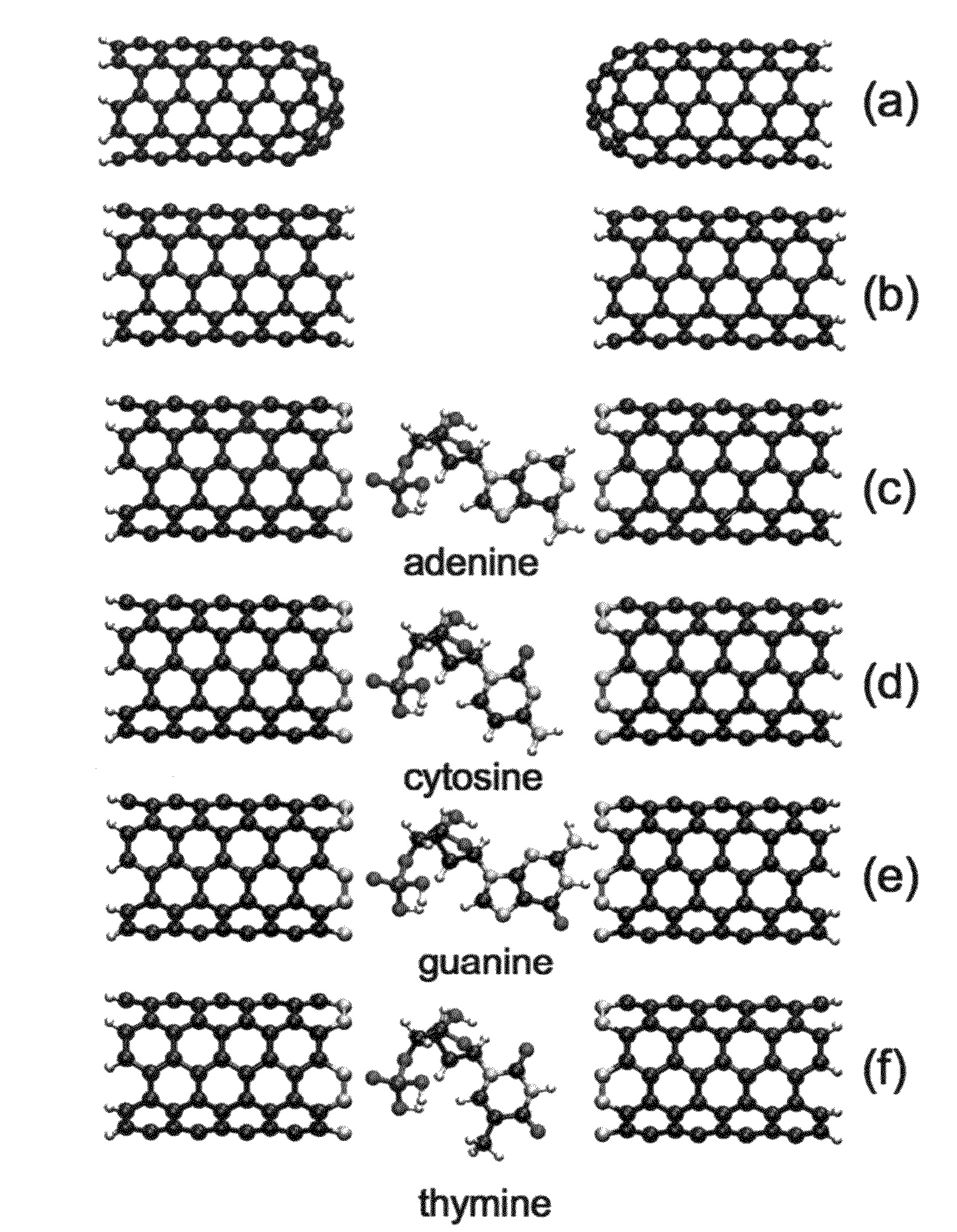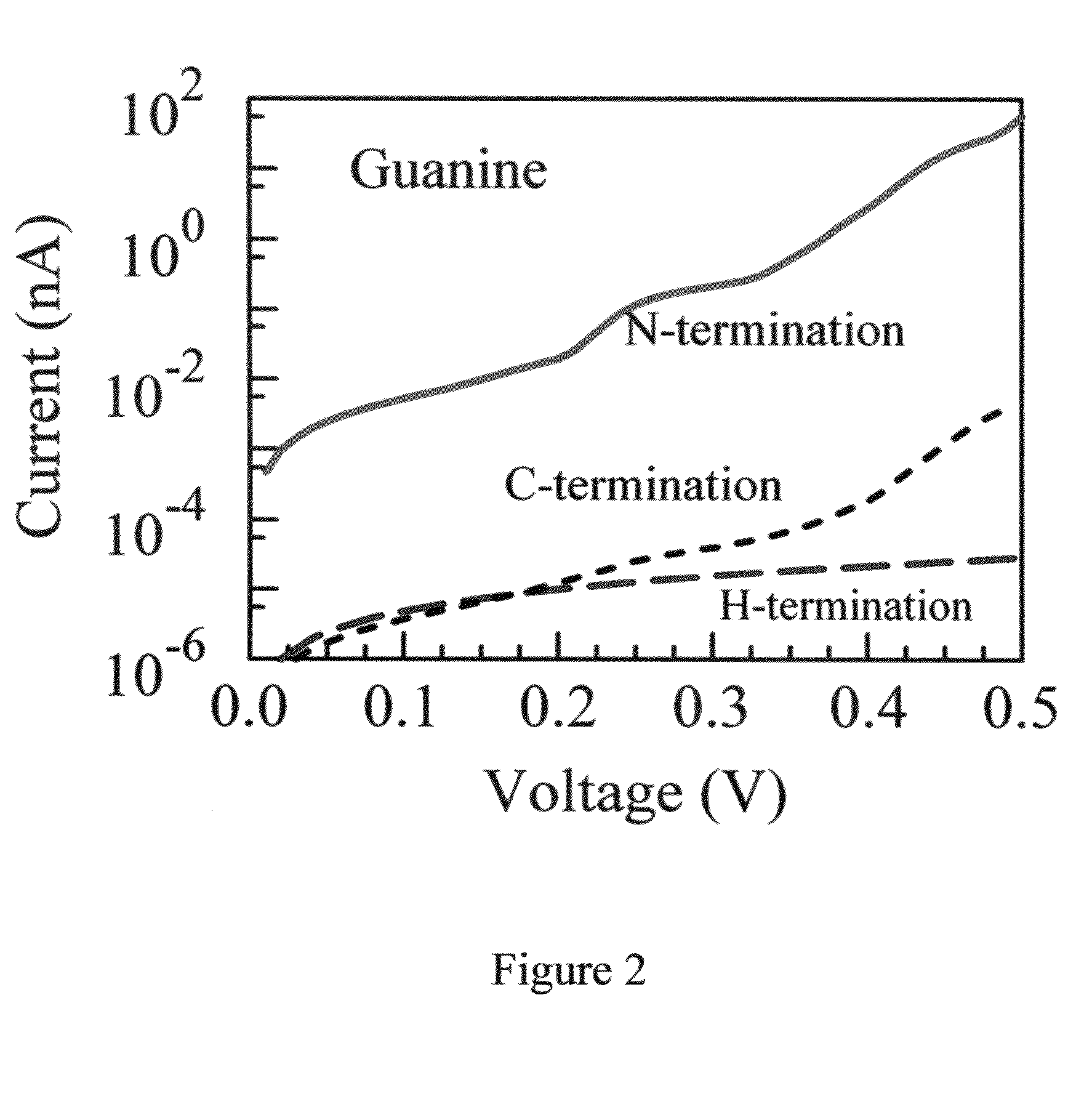Nanoscopic electrode molecular probes
a molecular probe and electrode technology, applied in the direction of scanning probe techniques, measurement leads/probes, instruments, etc., can solve the problems of weakening the predictive power of distinguishing various nucleotides, or even detecting their, and poor signal-to-noise ratio, and achieve the effect of reducing the uncertainty of the uncertainty, reducing the accuracy of the detection, and improving the detection accuracy
- Summary
- Abstract
- Description
- Claims
- Application Information
AI Technical Summary
Benefits of technology
Problems solved by technology
Method used
Image
Examples
example 1
[0060]Using density functional theory (DFT), it can be demonstrated that single-wall (metallic) CNTs, when properly terminated, can favorably replace metal electrodes, by enhancing the transverse electron transport across the DNA. In devices, nanotubes are connected to metallic electrodes attached to an external battery. Band realignment and charge injection in the vicinity of that “external” junction, as well as other imperfectness in the external circuitry have an effect on the magnitude of the direct current. However, nanotube leads are typically rather long (tens of nanometers) and screening takes place over a distance much shorter than the nanotube branch, supporting the assumption of the infinite leads. Therefore, this effect does not depend on the nanotube chemical ending close to the DNA nucleotide. The different behaviors for different endings will therefore be preserved (though the amplitude of the current might be modified). From a different perspective, it is noted that ...
PUM
| Property | Measurement | Unit |
|---|---|---|
| Electric charge | aaaaa | aaaaa |
| Lattice constant | aaaaa | aaaaa |
| Electrical conductance | aaaaa | aaaaa |
Abstract
Description
Claims
Application Information
 Login to View More
Login to View More - R&D
- Intellectual Property
- Life Sciences
- Materials
- Tech Scout
- Unparalleled Data Quality
- Higher Quality Content
- 60% Fewer Hallucinations
Browse by: Latest US Patents, China's latest patents, Technical Efficacy Thesaurus, Application Domain, Technology Topic, Popular Technical Reports.
© 2025 PatSnap. All rights reserved.Legal|Privacy policy|Modern Slavery Act Transparency Statement|Sitemap|About US| Contact US: help@patsnap.com



